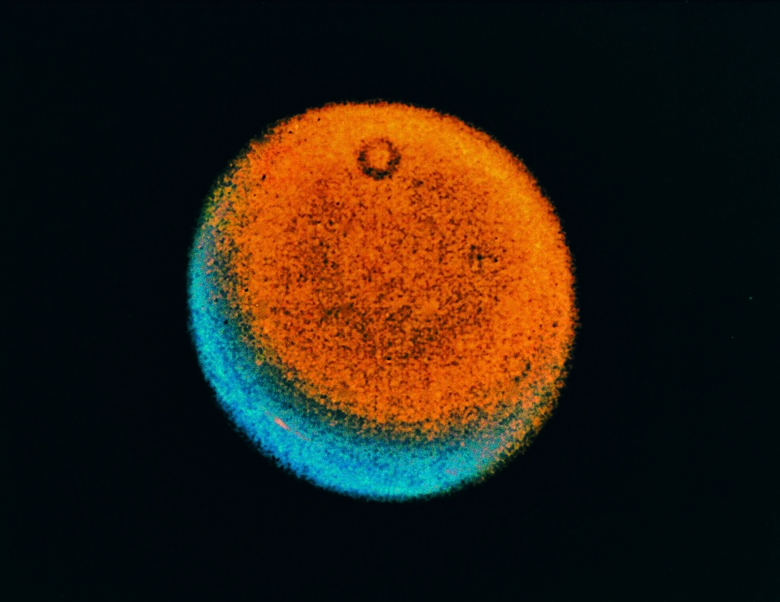What Geologic Activity Does Uranus Have?
Uranus, the seventh planet in the solar system, is Saturn's neighbor, but it hasn't attracted the same level of attention as the planet with the giant ring system. Only one spacecraft — Voyager 2 — has ventured near enough to take close-up pictures. It didn't record any geologic activity on Uranus itself because the ice giant doesn't have a solid surface. Three of Uranus' rocky moons, however, show signs of activity.
A Featureless Blue World
A Featureless Blue World
From afar, the surface of Uranus presents no distinguishing features, other than its sky-blue color, and from close up, the lack of surface features is even more striking. The blue color comes from methane and water ice clouds in the upper atmosphere. Below the clouds is a hydrogen-helium atmosphere that extends to the icy core. The core comprises 80 percent of the planet's mass, but it only extends to 20 percent of the radius. Uranus has a weak magnetic field, and it is tilted at a 60-degree angle with respect to its poles. The polar axis — strangely — is in roughly the same plane as the planet's orbit.
A Core of Floating Diamonds
A Core of Floating Diamonds
Uranus' highly offset magnetic field leads scientists to believe it has a liquid core, and not a solid one, like that of Saturn or Jupiter. The tilted magnetic field is a feature that Uranus shares with Neptune, and it may be a result of the cold temperatures at the distances that the planets orbit. In fact, the liquid sloshing around in the cores of these two planets may not be water, methane or any other component of their atmospheres. It may be carbon, forming a swirling, pressurized soup in which float islands of diamond, one of the solid forms of carbon.
Uranian Moons
Uranian Moons
Uranus may not have any geologic activity for scientists to study, but some of its moons do. As far as astronomers know in 2014, Uranus has 27 moons, and five of them are large enough to have been discovered from Earth using telescopes. The other 22 were discovered by Voyager and the Hubble Space Telescope. Oberon, the outermost of the five largest moons, is old and heavily cratered, as is Umbriel, the middle one of these moons. Titania, the largest moon, Miranda, the innermost and Ariel all show signs of geologic activity.
The Surfaces of Titania and Miranda
The Surfaces of Titania and Miranda
Ariel has the smoothest surface of any of the moons, and its relatively small-diameter craters indicate the probability of impacts with low-velocity objects that obliterated larger craters. This moon shows signs of the smoothing effects of flows of icy materials and valleys and ridges caused by movement around fault lines. The surface of Miranda is a patchwork of geologic features with an appearance unlike any other in the solar system. It shows signs of a mixture of older and younger surfaces caused by a surprisingly high degree of tectonic activity. Tidal forces generated by the proximity of the moon to Uranus may have generated the heat necessary for this activity.
Cite This Article
MLA
Deziel, Chris. "What Geologic Activity Does Uranus Have?" sciencing.com, https://www.sciencing.com/geologic-activity-uranus-have-19034/. 24 April 2017.
APA
Deziel, Chris. (2017, April 24). What Geologic Activity Does Uranus Have?. sciencing.com. Retrieved from https://www.sciencing.com/geologic-activity-uranus-have-19034/
Chicago
Deziel, Chris. What Geologic Activity Does Uranus Have? last modified August 30, 2022. https://www.sciencing.com/geologic-activity-uranus-have-19034/
